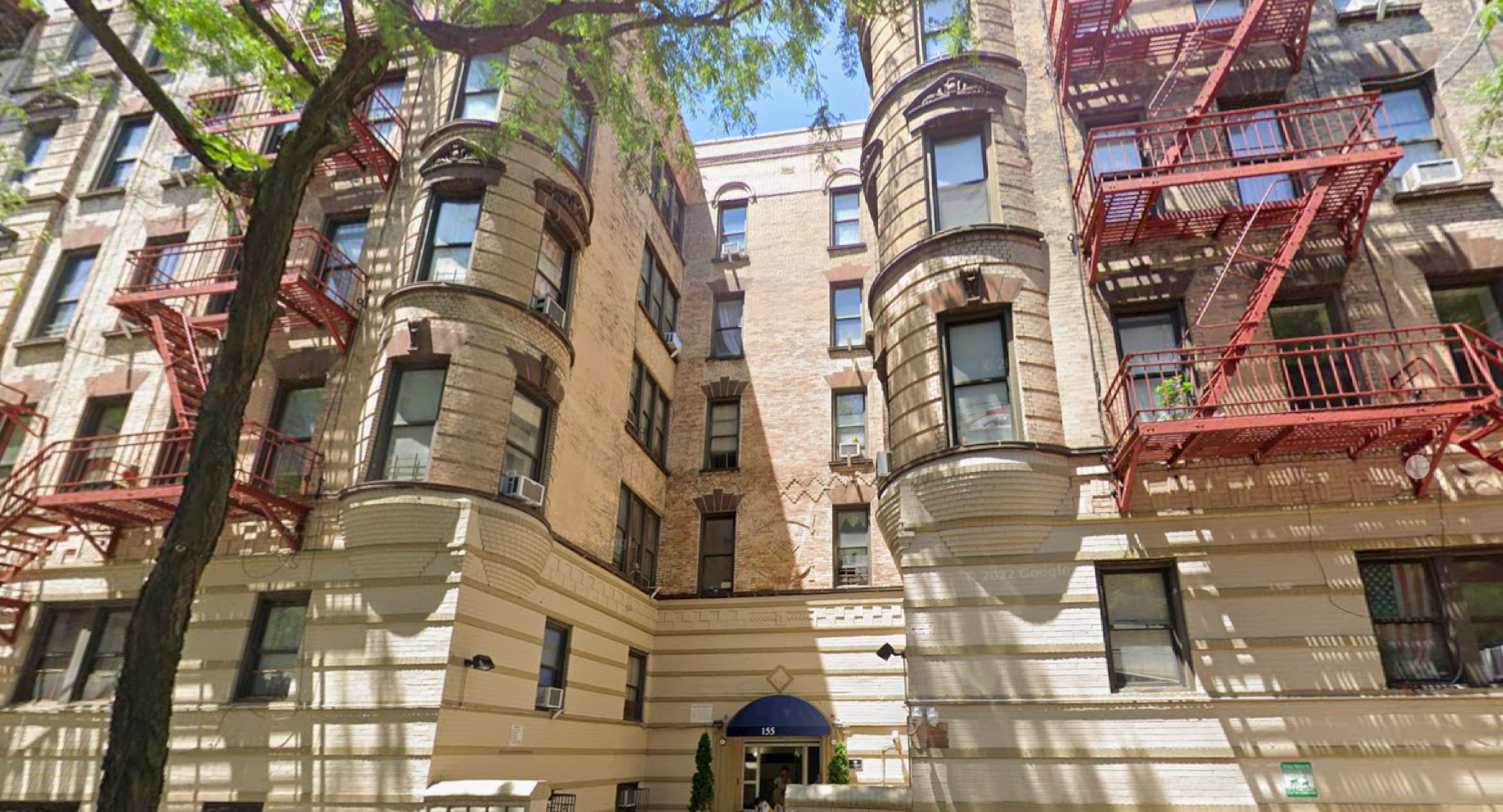155 Ridge St.
155 Ridge St., Lower East Side, Manhattan
At first glance, nothing about 155 Ridge Street seems very remarkable. The tan brick and the keystone-type lintels over the window immediately place the building around the turn of the century, a five-story residential building of its time. Stylistically, 155 Ridge Street is a bit of a blend between fading Romanesque Revival (tan brick, romantic “turrets”, the corbelled brickwork transitioning between the second and third floors) and incoming Renaissance Revival (those ubiquitous keystone lintels, the parallel “rusticating” lines running across the first two floors and up the corners of the building). Then, on closer inspection, we see a surprising collection of decorative rhombuses above the building’s recessed entrance courtyard. There is a rhombus right over the doorway, a lot of tiny rhombuses over that, a strange rhombus above them that looks like a Masonic eye framed by abstracted festoons, and then a very weird row of zig-zagging rhombuses that totally, awkwardly collides with the third floor lintels. Rhombuses like these were a positive fetish of a later era, the teens and 20s, when they were applied on all sorts of buildings as a kind of symbol of modernity. They absolutely don’t belong on a building erected between 1900 and 1905, as this one was.
Then we notice a larger contradiction. This building, with its recessed entrance courtyard, has the form of an Early Apartment House, a rarity anywhere in Lower Manhattan and a unicorn in the Lower East Side. This is a type of multiple-dwelling common in the Upper West Side and Morningside Heights, an “H”-shaped footprint with its open side facing the street, like this one at 251 West 97th Street, built in 1899. But if 155 Ridge Street is merely one of these built in a strange location, how to explain the “modern” rhombuses on a building of this apparent type and vintage?
Further investigation only deepens the oddity of 155 Ridge Street. It actually began as two separate, identical New Law Tenements, 155 and 159 Ridge Street, with a 15’ gap between them running the entire depth of the lot. This by itself is extremely unusual, probably unique, and it provided the tenants of the two buildings with more windows than they would have ordinarily enjoyed. New Law Tenements were often built as pairs, often designed to fit together and form an interior courtyard, but always using their entire street frontage.
Then, sometime in the early 1930s, the owners of the two tenements connected them and installed an elevator in the passageway. Providing an elevator for the tenants of a tenement in is rare even today but it was never done in the Depression, still less in the Lower East Side. Added to the weirdness, No. 155 is a five-story multiple-dwelling. A six-story building might or might not have an elevator, but it was unknown to equip a five-story residence with an elevator until the 1950s in New York.
Finally, the owners went to extraordinary lengths to have the new section match the appearance of the old buildings. The new window lintels exactly match the old ones, the brick and the brickwork exactly match the original brick and brickwork. It’s hard to overstate how difficult this is to accomplish, to get brick of the same tone decades later, to get the stone for the lintels to match the tone and texture of the original stone. To make this effort is extraordinary, to succeed so well is even more so. It’s almost possible to believe that the developers of the two tenements left the gap between them and stockpiled these materials with the intention of eventually doing exactly what was done thirty years later, connect them and use that addition to make the new unified building into an Apartment House.
But then there are those rhombuses, the same ones that alerted us to the anomalies of this building. Apparently, at the same time that the owners sought rigorously to honor the original buildings, they couldn’t resist the impulse to signify that something new had been done to unify and improve them, and used the rhombuses as that signifier. In a final irony, the rhombus by this time, in the 30s, was firmly out of fashion and virtually never used on the facades of contemporaneous buildings. With the arrival of Art Deco in the late 20s, modernity had found other symbols and tropes.
